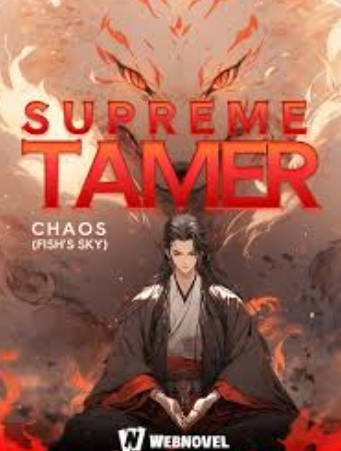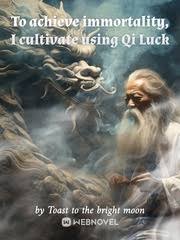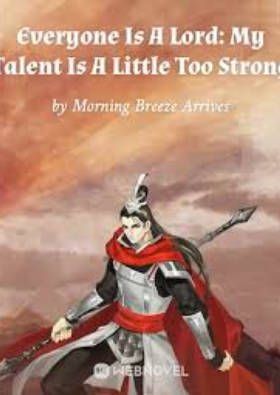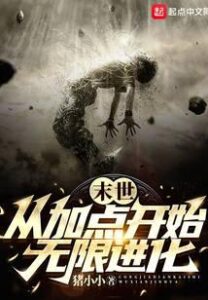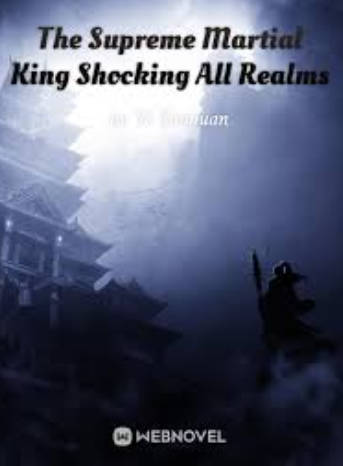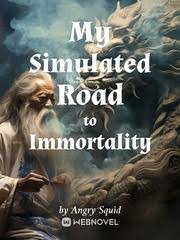Chapter 695: Every knife is like cutting on myself
An arm and a life, which is more important?
Everyone in the world knows the answer to this arithmetic problem, but when it reaches the level of practice, I believe that few people have done it. That’s why this story is so shocking! It's so thought-provoking when presented on the screen!
Alan Ruston took out the 4-inch folding knife and first aid kit, placed them on the rock in front of him, tightened his right upper arm with a bandage, and cut it down along the right elbow joint. ;23+wx
Because the knife was very blunt, Allen cut the muscle and soft tissue of the right arm continuously for an hour. Then he broke the radius near the wrist of the forearm first, and moved the position in the next few minutes, using the principle of torque, with the help of The rock broke the ulna.
A large amount of blood spewed out, stained the boulder that pressed his right arm, and ran to the ground. Due to the massive blood loss, Allen almost fainted. Then he took out the antiseptic ointment, bandage, etc. from the first aid kit, and gave it to his right arm. Emergency hemostasis treatment.
Alan Ruston is still alive and still climbing, so Natalie would not take such a heavy shot. Although the process of breaking his arm was bloody, it was too light to avoid the weight, far from what the propaganda said.
It is terrible to be selective, so Natalie took it out alone to shoot, but in reality, Alan Ruston borrowed the stone to break the bone, and probably not many audiences could bear it, so Natalie walked past these areas.
This section is the soul of the whole film. The Long Island girl used a very clever technique. The blood on Ryan's face was more like ketchup. There was no sign of blood spurting after his broken arm. He didn't even bleed while running— —How can a simple tourniquet have such a good effect — in fact, they all hinted at Natalie's intentions. What she wanted to shoot was not a broken arm, but a survival!
Natalie has discussed her understanding of the film with Ryan several times. The theme of the film is not based on the abuse of the heart and the lungs. She shows more courage and will, and is the hope of life!
This is a movie full of hope!
Allen was trapped on a steep rock face 65 feet from the bottom of the canyon. After a simple hemostasis, he fixed a rope to the rock wall with a climbing anchor, descended with the aid of the rope with one arm, and obtained much-needed water from the dirty pool, and walked toward the hope of life.
The wider the desert canyon, the softer the sand, and the easier it is to sink. For ordinary people, walking on this is also very difficult and laborious. Alan not only has to fight for time with blood loss, coma, dehydration, etc., but also needs to walk on foot for at least 7 Miles to see a glimmer of hope
Fortunately, his luck exploded at this time. When he stumbled and approached the Horseshoe Valley, two Dutch hikers walked towards him. They hurriedly gave Alan food and water, and then in a hurry, the three moved on.
They walked through the ‘Great Gallery’ area, and just about a mile away from Allen’s car, a helicopter arrived-Allen had not been at work for 5 days. His colleague called the police, and the police sent a helicopter to search for it. Alan's car was found in Horseshoe Canyon-when it was about to land for inspection, I saw three of them!
After the helicopter landed, rescuers were stunned and found that besides the two Dutch travelers, there was another person standing there, all red. From head to toe, there were scabs of dried blood and blood flowing out. The blood from his broken arm had stained his right leg the same color as red sandstone!
On the plane, rescuers kept talking to Allen. Lest he fall asleep, they saw his empty right sleeve tube, although they knew what was going on. But I didn't dare to think about it, and it was inconvenient to ask. On the contrary, Allen, who was drinking from the cabin, told them straightforwardly that he had to break his arm to survive.
Twelve minutes later, the plane arrived at St. Mary's Hospital. The most bizarre thing in the whole incident, which made everyone stunned, happened. Allen walked into the emergency room without any help!
Natalie deliberately used the rescuers' words to show Alan's will-he is simply not a human being!
The film did not end there. Natalie explained the development of the follow-up events with a quick-switching short shot and text narration.
"The police went to Blue John Canyon to look for Alan’s right arm. The rock climbing lock was still hanging there. From now on, it can be seen that Alan used ropes and hooks to form a simple pulley to try to move the boulder. It weighs almost 800 pounds and is big enough to fill a half-truck."
"Allen's severed arm is still there, with blood stains around it. The doctor said that even if the severed arm and Allen were sent back to the hospital at the time, there was no way to transplant it again; one step back, even if Allen was the first in distress Tian was rescued by others, Allen still needs to be amputated."
After showing Alan’s life after amputation, the end of the film was transferred to a press conference released by his autobiography. This is a real video material.
"In those 5 days, I have been thinking about how to get out of trouble. My mood has changed many times, but I know that I must remain calm. When I am on the rock wall, I often fantasize about drinking."
In the process of expressing, Allen mentioned mental function and the power of friends many times, "In the canyon, I feel that someone is with me, and I feel that my relatives and friends are with me. They gave me strong will and greatness. Courage."
Life is empty and boring. Only in the wilderness can we create extraordinary possibilities!
With more photos of Alan Ruston climbing, this text appeared on the screen, and then the subtitles fell, the theme song sang by Taylor sounded, and the film ended.
Applause suddenly rang, and from the ordinary audience in the last row, it quickly spread to the position of the front row guests. Ryan stood up first and slapped his palms hard while looking at Natalie who was a little excited.
"Congratulations, Nat."
"This is a great movie!"
"You did a great job!"
"You will be one of the best female directors in Hollywood..."
Many people gathered around and congratulated Natalie. The female director responded one by one. Although the smile on her face was inevitably formulaic, Ryan could see that Natalie was very happy.
She has ambitions and desires. She has known what she wants more than ten years ago and is constantly working hard for it.
"Nate, I'm proud of you." Ryan gave her a hard hug, "The film is even better than I thought."
"Thank you!" Natalie kissed the corner of his mouth very quickly, "Thank you for your support, Ryan, I can't do this without you."
"After watching this film, I feel confident." Ryan whispered in her ear, "Honey, wait for your first Oscar nomination in your life."
This film really surpassed Ryan's expectations of Natalie, perhaps because of the training of the first two experimental films, her learning accumulation for more than ten years has finally bloomed as she deserves.
As a true biographical film adaptation, "127 Hours" has its inevitable natural flaws-the plot conflict is not enough, the story line is too single.
In the film’s narrative, only one clue was chosen by Allen. Eighty percent of the shots in the film are his pictures and his perspective. Natalie made a point specially-it is impossible to know when people are trapped. Other things besides myself!
"Does the family know that I am missing?"
"Are they looking for me?"
"Did my friend call the police?"
I don't know anything about it! Some are just unknown, at a loss, fear, anxiety, worry...
Only with this method can these emotions be better displayed, and the audience can more easily understand the heart of the protagonist at this moment. Although Natalie has abandoned the effect of plot conflict, she has achieved a high degree of reduction in the presentation of emotions.
Especially the scene of survival with amputated limbs, when the film is presented, it is obviously much worse than the level of "bloody" in shooting. Natalie adopted a more restrained approach in post-production, deliberately blurring the scenes of amputated limbs. The degree of bloody, as far as possible so that the audience does not feel too much discomfort.
Even though Ryan has not experienced it personally, he knows that the reality is much more cruel and **** than what is shown in the film. Even so, I still feel painful when watching this episode, and it even hurts until the end of the film. As if it was cut on his body, that kind of pain in the **** went straight to the heart, as he said, I can’t imagine how Alan Ruston got here...
In terms of important emotional narratives, Natalie also adopted a more restrained attitude. Instead of simple sensationalism, she focused on her attitude towards life, which is commendable.
Natalie also showed her unique side in lens application and editing.
Before Allen was trapped, the camera moved and had a panoramic view. His heart was extremely happy and excited. It was very bright and showed the magnificent and magnificent scenery of Canyon National Park.
When Allen was trapped, the lens also turned to be fixed, the use of close-up lens showed that kind of occlusion high pressure.
Especially in the use of color, in the short film "Coffee" she shows her uniqueness, and this film is no exception.
The color of the picture is very beautiful. The large areas of crimson-orange mountain rocks in the first half, the leaning sunlight at the end and the swimming pool with sparkling waves all give a warm feeling, and most of them are gloomy when trapped. It is cold and dark, even if there is light, it flashes by, and the time is very short, setting off the feeling of darkness and depression.
I have to say that the Canyon National Park under her lens is really beautiful, maybe after the film is released, there will be more tourists who love adventure.
All in all, in Ryan's view, as a biopic, it is already very good to be able to make this look.
Although there are still shortcomings and shortcomings, there are some flaws in the grasp of the rhythm and the inner struggle of the protagonist, but it is not important. This film clearly conveys more meaningful things-will, courage and love life!
This is a theme that the audience likes very much, and it is also a theme that many judges of the college like. For Ryan, this is enough.
Enough for him to start public relations operations, enough for Natalie to win the belated Oscar nomination. (To be continued...) ()
Everyone in the world knows the answer to this arithmetic problem, but when it reaches the level of practice, I believe that few people have done it. That’s why this story is so shocking! It's so thought-provoking when presented on the screen!
Alan Ruston took out the 4-inch folding knife and first aid kit, placed them on the rock in front of him, tightened his right upper arm with a bandage, and cut it down along the right elbow joint. ;23+wx
Because the knife was very blunt, Allen cut the muscle and soft tissue of the right arm continuously for an hour. Then he broke the radius near the wrist of the forearm first, and moved the position in the next few minutes, using the principle of torque, with the help of The rock broke the ulna.
A large amount of blood spewed out, stained the boulder that pressed his right arm, and ran to the ground. Due to the massive blood loss, Allen almost fainted. Then he took out the antiseptic ointment, bandage, etc. from the first aid kit, and gave it to his right arm. Emergency hemostasis treatment.
Alan Ruston is still alive and still climbing, so Natalie would not take such a heavy shot. Although the process of breaking his arm was bloody, it was too light to avoid the weight, far from what the propaganda said.
It is terrible to be selective, so Natalie took it out alone to shoot, but in reality, Alan Ruston borrowed the stone to break the bone, and probably not many audiences could bear it, so Natalie walked past these areas.
This section is the soul of the whole film. The Long Island girl used a very clever technique. The blood on Ryan's face was more like ketchup. There was no sign of blood spurting after his broken arm. He didn't even bleed while running— —How can a simple tourniquet have such a good effect — in fact, they all hinted at Natalie's intentions. What she wanted to shoot was not a broken arm, but a survival!
Natalie has discussed her understanding of the film with Ryan several times. The theme of the film is not based on the abuse of the heart and the lungs. She shows more courage and will, and is the hope of life!
This is a movie full of hope!
Allen was trapped on a steep rock face 65 feet from the bottom of the canyon. After a simple hemostasis, he fixed a rope to the rock wall with a climbing anchor, descended with the aid of the rope with one arm, and obtained much-needed water from the dirty pool, and walked toward the hope of life.
The wider the desert canyon, the softer the sand, and the easier it is to sink. For ordinary people, walking on this is also very difficult and laborious. Alan not only has to fight for time with blood loss, coma, dehydration, etc., but also needs to walk on foot for at least 7 Miles to see a glimmer of hope
Fortunately, his luck exploded at this time. When he stumbled and approached the Horseshoe Valley, two Dutch hikers walked towards him. They hurriedly gave Alan food and water, and then in a hurry, the three moved on.
They walked through the ‘Great Gallery’ area, and just about a mile away from Allen’s car, a helicopter arrived-Allen had not been at work for 5 days. His colleague called the police, and the police sent a helicopter to search for it. Alan's car was found in Horseshoe Canyon-when it was about to land for inspection, I saw three of them!
After the helicopter landed, rescuers were stunned and found that besides the two Dutch travelers, there was another person standing there, all red. From head to toe, there were scabs of dried blood and blood flowing out. The blood from his broken arm had stained his right leg the same color as red sandstone!
On the plane, rescuers kept talking to Allen. Lest he fall asleep, they saw his empty right sleeve tube, although they knew what was going on. But I didn't dare to think about it, and it was inconvenient to ask. On the contrary, Allen, who was drinking from the cabin, told them straightforwardly that he had to break his arm to survive.
Twelve minutes later, the plane arrived at St. Mary's Hospital. The most bizarre thing in the whole incident, which made everyone stunned, happened. Allen walked into the emergency room without any help!
Natalie deliberately used the rescuers' words to show Alan's will-he is simply not a human being!
The film did not end there. Natalie explained the development of the follow-up events with a quick-switching short shot and text narration.
"The police went to Blue John Canyon to look for Alan’s right arm. The rock climbing lock was still hanging there. From now on, it can be seen that Alan used ropes and hooks to form a simple pulley to try to move the boulder. It weighs almost 800 pounds and is big enough to fill a half-truck."
"Allen's severed arm is still there, with blood stains around it. The doctor said that even if the severed arm and Allen were sent back to the hospital at the time, there was no way to transplant it again; one step back, even if Allen was the first in distress Tian was rescued by others, Allen still needs to be amputated."
After showing Alan’s life after amputation, the end of the film was transferred to a press conference released by his autobiography. This is a real video material.
"In those 5 days, I have been thinking about how to get out of trouble. My mood has changed many times, but I know that I must remain calm. When I am on the rock wall, I often fantasize about drinking."
In the process of expressing, Allen mentioned mental function and the power of friends many times, "In the canyon, I feel that someone is with me, and I feel that my relatives and friends are with me. They gave me strong will and greatness. Courage."
Life is empty and boring. Only in the wilderness can we create extraordinary possibilities!
With more photos of Alan Ruston climbing, this text appeared on the screen, and then the subtitles fell, the theme song sang by Taylor sounded, and the film ended.
Applause suddenly rang, and from the ordinary audience in the last row, it quickly spread to the position of the front row guests. Ryan stood up first and slapped his palms hard while looking at Natalie who was a little excited.
"Congratulations, Nat."
"This is a great movie!"
"You did a great job!"
"You will be one of the best female directors in Hollywood..."
Many people gathered around and congratulated Natalie. The female director responded one by one. Although the smile on her face was inevitably formulaic, Ryan could see that Natalie was very happy.
She has ambitions and desires. She has known what she wants more than ten years ago and is constantly working hard for it.
"Nate, I'm proud of you." Ryan gave her a hard hug, "The film is even better than I thought."
"Thank you!" Natalie kissed the corner of his mouth very quickly, "Thank you for your support, Ryan, I can't do this without you."
"After watching this film, I feel confident." Ryan whispered in her ear, "Honey, wait for your first Oscar nomination in your life."
This film really surpassed Ryan's expectations of Natalie, perhaps because of the training of the first two experimental films, her learning accumulation for more than ten years has finally bloomed as she deserves.
As a true biographical film adaptation, "127 Hours" has its inevitable natural flaws-the plot conflict is not enough, the story line is too single.
In the film’s narrative, only one clue was chosen by Allen. Eighty percent of the shots in the film are his pictures and his perspective. Natalie made a point specially-it is impossible to know when people are trapped. Other things besides myself!
"Does the family know that I am missing?"
"Are they looking for me?"
"Did my friend call the police?"
I don't know anything about it! Some are just unknown, at a loss, fear, anxiety, worry...
Only with this method can these emotions be better displayed, and the audience can more easily understand the heart of the protagonist at this moment. Although Natalie has abandoned the effect of plot conflict, she has achieved a high degree of reduction in the presentation of emotions.
Especially the scene of survival with amputated limbs, when the film is presented, it is obviously much worse than the level of "bloody" in shooting. Natalie adopted a more restrained approach in post-production, deliberately blurring the scenes of amputated limbs. The degree of bloody, as far as possible so that the audience does not feel too much discomfort.
Even though Ryan has not experienced it personally, he knows that the reality is much more cruel and **** than what is shown in the film. Even so, I still feel painful when watching this episode, and it even hurts until the end of the film. As if it was cut on his body, that kind of pain in the **** went straight to the heart, as he said, I can’t imagine how Alan Ruston got here...
In terms of important emotional narratives, Natalie also adopted a more restrained attitude. Instead of simple sensationalism, she focused on her attitude towards life, which is commendable.
Natalie also showed her unique side in lens application and editing.
Before Allen was trapped, the camera moved and had a panoramic view. His heart was extremely happy and excited. It was very bright and showed the magnificent and magnificent scenery of Canyon National Park.
When Allen was trapped, the lens also turned to be fixed, the use of close-up lens showed that kind of occlusion high pressure.
Especially in the use of color, in the short film "Coffee" she shows her uniqueness, and this film is no exception.
The color of the picture is very beautiful. The large areas of crimson-orange mountain rocks in the first half, the leaning sunlight at the end and the swimming pool with sparkling waves all give a warm feeling, and most of them are gloomy when trapped. It is cold and dark, even if there is light, it flashes by, and the time is very short, setting off the feeling of darkness and depression.
I have to say that the Canyon National Park under her lens is really beautiful, maybe after the film is released, there will be more tourists who love adventure.
All in all, in Ryan's view, as a biopic, it is already very good to be able to make this look.
Although there are still shortcomings and shortcomings, there are some flaws in the grasp of the rhythm and the inner struggle of the protagonist, but it is not important. This film clearly conveys more meaningful things-will, courage and love life!
This is a theme that the audience likes very much, and it is also a theme that many judges of the college like. For Ryan, this is enough.
Enough for him to start public relations operations, enough for Natalie to win the belated Oscar nomination. (To be continued...) ()
